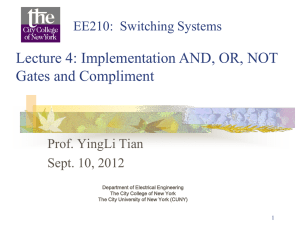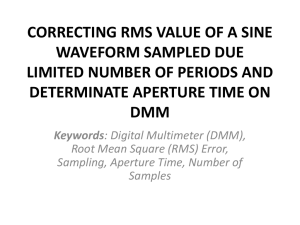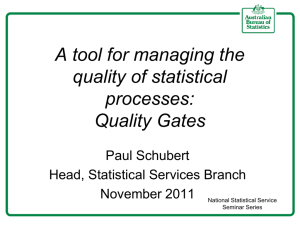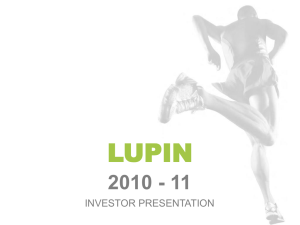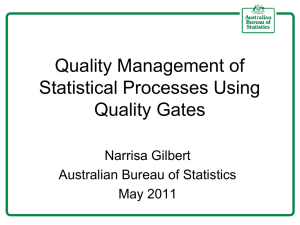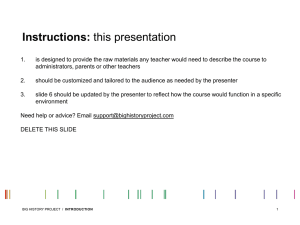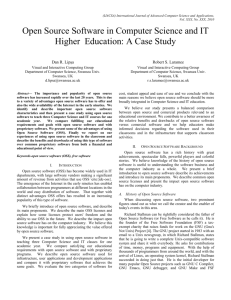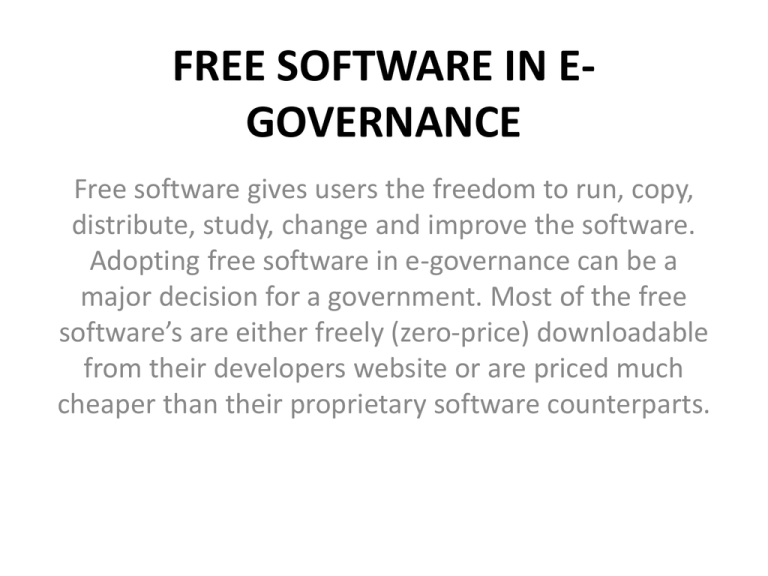
FREE SOFTWARE IN EGOVERNANCE
Free software gives users the freedom to run, copy,
distribute, study, change and improve the software.
Adopting free software in e-governance can be a
major decision for a government. Most of the free
software’s are either freely (zero-price) downloadable
from their developers website or are priced much
cheaper than their proprietary software counterparts.
Since the source code of free software is available
dependency on imported technology and skills. Free software
is more reliable and secure. Simplify access to administrative
data for the administration &Reduce management costs,
Improve the citizen/government relationship.
E-government: what we really want ?
Solutions that Give control back to the user
Allow to choose among a large set of providers
Guarantee technological neutrality (open formats and
protocols)
Preserve the “illusion” of security
provide for everlasting solutions /
This is technologically, socially, economically feasible today!
free software
Tenth Five-Year Plan the working group on
convergence and e-governance has earmarked
an investment of Rs 2,680 crore, out of which Rs
1,830 crore is for convergence and Rs 850 crore
for e-governance. There are four Cornerstones
for supporting e-governance: hardware,
software, training and support. Broadly
speaking, software is a self-contained
environment for performing some well-defined
Tasks.
The term “Free software” was coined by Richard
Stallman. The Free in "Free software"has
nothing to do with price. It is about freedom.
Free software gives users the freedom to run,
copy, distribute, study, change and improve the
software. More precisely, it refers to four kinds
of freedom, for the users of the software:
1. The user can run the software for any purpose.
2. The users have the freedom to study how the software works, and
adapt it to his needs . Software developers typically deliver software
that is a black box. The users
Cannot study or change it. Free software provides access to the source
code1for the
Software to the users. They can read, fix, adapt and improve, not just
operate the software.
3. The users have the freedom to improve the program, and release
improvements to the public.
Software is free software if users have all of these freedoms. As we
see, ``Free software'' is a matter of liberty, not price.
1 In reference to software, ‘source code' is the human-readable and
human-modifiable form of the software. The source code is
Compiled to produce the ‘object code’ or the binary executable form
of software.
Free Software Foundation (FSF) was founded in 1985.
Many organizations engage in distributing and selling
free software, however the Free Software Foundation
concentrates on
Development of new free software and on making that
software into a coherent system that can eliminate the
need to use proprietary software. The FSF also protects
and Preserves free software from infringement by
unscrupulous parties..
Softwares available as Free Software
GNU/Linux Operating System –- is a very popular operating system used in
running the Internet and in mission critical environments. Linux has also been
deployed in commercial environments as well as on personal desktops with an
excellent pool of public testimonials.
2. GNU Emacs -- Originally, a powerful character-mode text editor, over time
Emacs was enhanced to provide a front-end to compilers, mail readers, etc.
3. GNU C Compiler (GCC) -- GCC is the most widely used compiler in academia &
the in the production of free software. In addition to the compiler a standardized
set of intermediate libraries are available as a superset to the ANSI C libraries.
4. GNU GhostScript -- Postscript printer/viewer
5. Apache -- Apache is the most popular server software on the Web
6. BIND -- BIND (Berkeley Internet Name Daemon) is the de facto DNS server for
the Internet. In many respects, DNS was developed on top of BIND.
7. Sendmail -- Sendmail is the topmost mail transfer agent on the Internet today.
Security
To guarantee the security of the State, it is indispensable to be
able to rely on systems that guard against unauthorized
control from outside. The system should also protect
undesired transmission of information to third parties. Privacy
of citizens would be compromised if information about them
with the Government gets into the hands of interested
parties. Incase of proprietary software, Government is not in
possession of the
Source code. It cannot be sure of what the software does and
what security problems can arise from the use of the
software. Paradoxically, availability of the source code is the
main reason why free software can offer greater protection
against unauthorized attacks
Why Free Software for education?
Digitization of cultural resources can facilitate the conduct of
education, or for that matter any domains where ICT is being
used or recommended, if and only if it is conducted in the lines
of free software movement, else it is going to go against social
and democratic values. I will elaborate my argument below.
The argument can be best understood if we focus on what
happens when we digitize any document, whether text or other
kinds of media. Digitization uses a computing model to write
(encode) the data, and when we try to retrieve the data, the
computer reads (decodes) it for us in a human readable form.
Normally, we expect that the computing model used for
encoding and decoding is part of computer science, and so we
rely on it.
However, since code is by nature arbitrary, each company can
invent (mind you an arbitrary invention is not necessarily an
innovation) its own model of digitization and provides a
computing service to its customers
Free Software Movement (FSM) identifies this as the root cause
of betrayal that happens in the digital society in various forms.
The computing model used must be published, just as any
scientific or technological models are published for use by the
society. More important than providing access, by publication, is
the freedom to use the computing model by other agencies. In
addition to this, FSM also seeks the freedom to modify the
model, as well as the freedom to republish the model either
without any restrictions or with the restriction that other users
cannot transform them into private property.
Considering that computer science is a strange mix of deep
theory as well as sophisticated technology, it is very vital for
any society to use this transparently. Else, we will let some
agencies become monopolies. This is a serious danger to
digital society because, the data that is digitized belongs to
you and me, and not to the company
All of us know well that the process of education is an
important agency of cultural transmission, whether formal or
informal mode of education. In traditional (non-digital)
society, this happened by using natural languages, whose
encoding and decoding knowledge (syntax and semantics) is
stored only in the “way of life”. The language games we play
naturally stores this knowledge, and therefore we can use
these langauges in the process of education.
For formal languages (scientific and mathematical models),
where in the syntax and semantics is artificially declared, used
heavily in science and technology, the coding and decoding
rules are publicly archived, and accessible as cultural
resources to all the people.
If we understand how digital reading and writing takes place,
and if we understand how users are prevented from reading,
and also understand how the companies encourage us to
write and create more and more cultural resources using the
privately appropriated means, what we are doing is nothing
but pouring our cultural resources into their kitty, which is a
black hole for us, and a property for them.
This is how the current digital business is working. We are all
made slaves of this new so called knowledge society. [I
recommend, by the way, not to use the term, 'knowledge
society', for human society has always been a knowledge society.
We should on the other hand use the more appropriate term
'digital society', for that is what it is. What we therefore need is a
digital commission and not a knowledge commission.]
It has been a practice to distinguish the learning resources (often
called content) from the technology (the software) and infrastructure. This is a serious mistake, and the current drafts that
are circulated by the MHRD commit this mistake.
How does copyleft work?
To understand how Free Software works, it is necessary to see
how copyright can be used for creative works we write,
including software. All of us are aware of the copyright law,
and how most people use it. For example, a book published by
MIT press, titled Philosophy of Computing Information has this
on the copyright page:
© 2004 by Blackwell Publishing Ltd
All rights reserved. No part of this publication may be
reproduced, stored in a retrieval system, or transmitted, in
any form or by any means, electronic, mechanical,
photocopying, recording or otherwise, except as permitted by
the UK Copyright, Designs, and Patents Act 1988, without
prior permission of the publisher
Richard M. Stallman (popularly known as RMS). He began to invent
different ways of writing a copyright statement. For example the book
titled Free Software Free Society, that contains selected essays of RMS
has this copyright statement:
©2002 Free Software Foundation
Permission is granted to make and distribute verbatim copies of this
book provided the copyright notice and this permission notice are
preserved on all copies.
Thus the greatness of RMS is not that he is one of the greatest
programmers, though he is indeed one. History will remember him for
the most important invention, nowadays aptly called, copyleft. A
copyleft is an intelligent use of copyright for giving and protecting
freedom of using a cultural resource, than imposing restrictions. RMS
invented GPL (General Public Innocence) for this purpose. It is mostly
used for software. GPL is a long carefully crafted document, a must
read to understand the spirit of free software movement
Free Software is an eminent and indispensible choice
for education
How many times your proprietary operating system
yelled at you: “The program committed an illegal
operation, please contact the program vendor” and
quits from running the application Several times, the
OS hangs, displaying a blue screen. Most of you will
reboot the system, some times reinstall . This does not
happen with FS. When the program did not work, you
could download the source code, look at the program,
identify the bug, and possibly fix it.
The Two Faces of Mr. Gates. Was Microsoft chief Bill
Gates’ dual-purpose, philanthropic-cum-business visit
to India basically motivated by the desire to strengthen
his company’s monopoly over the large software
market in India? This is a view that is held by many
advocates of the free software movement, who are
disappointed by the willingness of state and central
government agencies to rub shoulders with Gates and
rely on his software, especially the Windows platform,
when implementing their IT initiatives.
Given this track record Gates’ philanthropy in India is suspect
as well. After providing $100 million to strengthen the fight
against Aids, Gates announced that Microsoft will make its
largest investment outside the US in India by pumping in $400
million (about Rs 2,000 crore) over the next three years to
spread computer literacy, outsource more software and boost
its business in the country.
Sun-Oracle deal: A loss for free software movement Sun
Microsystems CEO Jonathan Schwartz said that in a survey the
company did among 2,000 students worldwide, less than 6%
knew Oracle, but over 90% knew Sun's rival database product
MySQL. He also said there was "unprecedented migration” to
free software like MySQL, especially from Oracle database
customers.

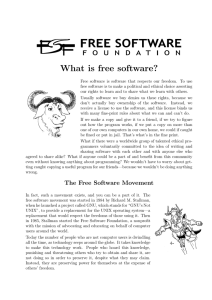

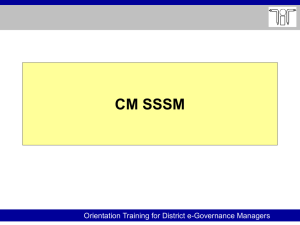
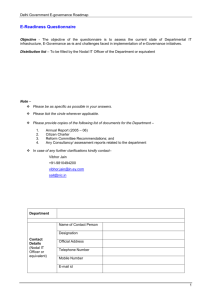
![Copyleft Presentation [English]](http://s2.studylib.net/store/data/005422621_1-22fca5bcd233f6088a57b404dac969db-300x300.png)
